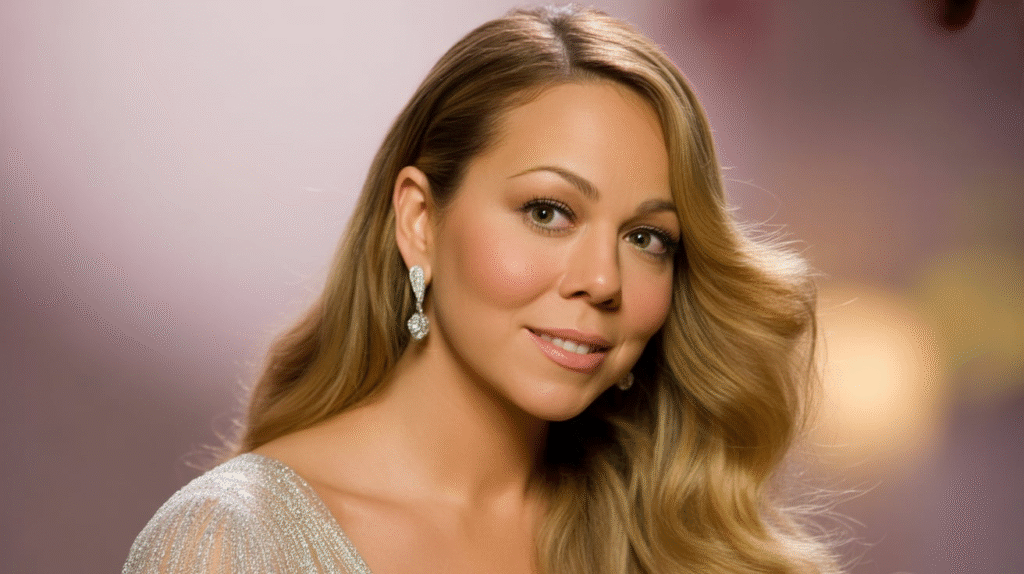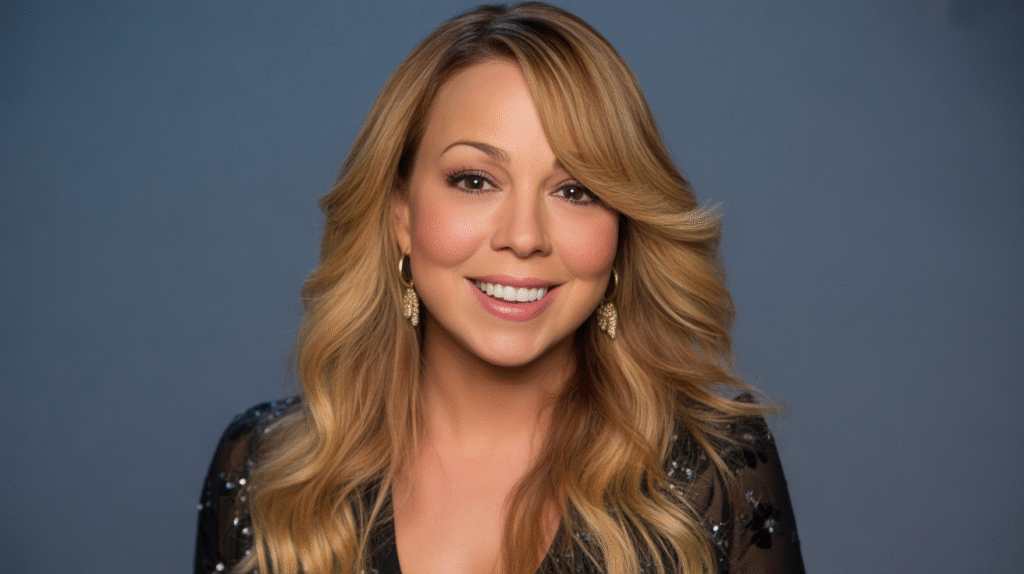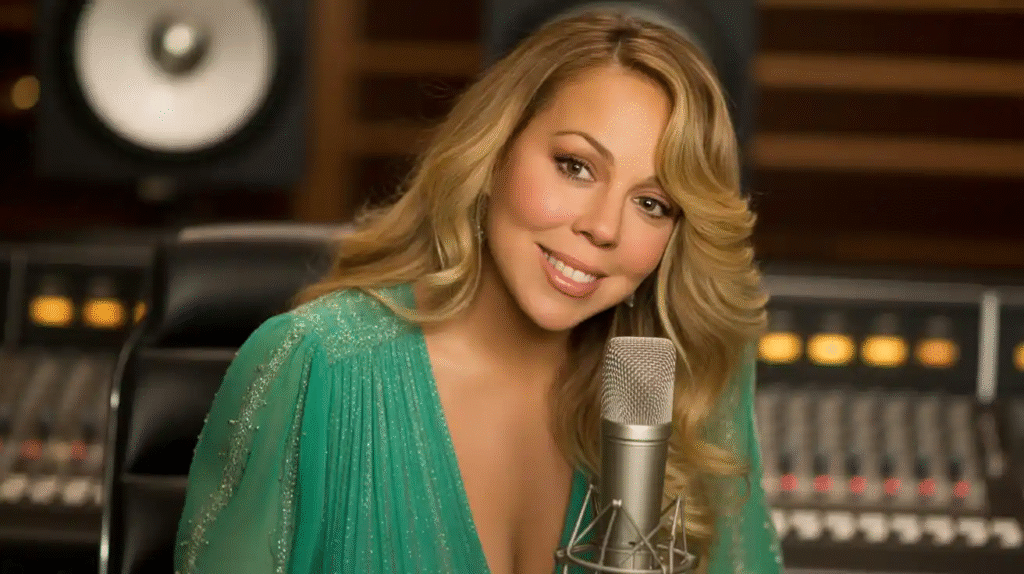Mariah Carey. Even just her name evokes instant emotion, whether it’s the soaring whistle notes of “Emotions” or the unforgettable yearly return of “All I Want for Christmas Is You.” To millions around the globe, she isn’t just a singer—she’s a vocal powerhouse, a pop icon, and a woman who has redefined the music industry in her own terms.
In this in-depth article, we’ll explore Mariah Carey’s journey from a young, aspiring singer in New York to becoming one of the best-selling female artists of all time. We’ll touch on her musical evolution, her battles with the industry, her impact on pop and R&B music, and why her influence continues to shape new artists today.
Whether you’re a lifelong fan or just discovering her genius, this is the definitive guide to Mariah Carey.
Chapter 1: Humble Beginnings

On March 27, 1969, Mariah Angela Carey was born in Huntington, New York. The daughter of Patricia, an opera singer and vocal coach, and Alfred Roy Carey, an aeronautical engineer, Mariah grew up in a mixed-race household. Her childhood wasn’t easy—facing racism, financial hardships, and a strained family dynamic, music became her escape.
By the time she was in high school, she was already writing songs, working multiple jobs, and taking vocal lessons. A powerful early lesson I learned from her story? Dreams require hustle—even when no one’s watching.
Chapter 2: The Fairytale Discovery—Or Was It?
The story is almost mythical now. At a gathering, Mariah gave Tommy Mottola, an executive at Columbia Records, her demo tape. He listened to it in the car and was so blown away, he turned back to find her.
It sounds magical, but behind the scenes, Mariah had already been working relentlessly, collaborating with seasoned producers and building her sound. With hits like Vision of Love and Love Takes Time at the top of the charts, her first self-titled album was released in 1990.
These tracks didn’t just show off her incredible range—they introduced the world to her unique songwriting and vocal layering techniques.
Chapter 3: The Rise to Superstardom

The 1990s belonged to Mariah. Album after album—Emotions, Music Box, Daydream—each project pushed her into new creative spaces while delivering massive commercial success.
Let’s pause and talk numbers:
- Over 200 million records sold worldwide
- 19 number-one singles on the Billboard Hot 100 (second only to The Beatles!)
- The first performer to achieve #1 status on Billboard with their first five singles
With each album, she evolved vocally and stylistically. Fantasy, for instance, was a pop masterpiece that incorporated hip-hop elements long before it was trendy. These days, the remix featuring Ol’ Dirty Bastard is regarded as defining the genre.
This was also the time I personally became obsessed with her. I remember playing Daydream on my Walkman and feeling like someone finally understood the emotions I couldn’t express. That’s the Carey effect—her music connects on a soul level.
Chapter 4: Vocal Genius – The 5-Octave Phenomenon
Mariah’s voice is often described as “once in a generation,” and that’s not hyperbole. She’s known for her:
- 5-octave vocal range
- Signature whistle register
- Emotional, melismatic singing
As someone who’s studied music, I can tell you: her control is extraordinary. She doesn’t just hit high notes—she sculpts them. She turns syllables into emotion.
Even in live performances—like her MTV Unplugged set—she sounds pitch-perfect. It’s no wonder artists like Ariana Grande and Beyoncé cite her as a major influence.
Chapter 5: The Glitter Era—A Lesson in Resilience

Let’s be real—Glitter was a low point in her career. The 2001 movie and album received negative reviews from critics. She faced a public mental health crisis and was dropped by her label.
But here’s the thing about Mariah Carey: she doesn’t stay down for long.
In 2005, she released The Emancipation of Mimi. With hits like We Belong Together, she was back on top, winning Grammys and reclaiming her throne.
This comeback taught me something personal: falling isn’t the end. Reinvention is always possible.
Chapter 6: Beyond the Music – Businesswoman & Author
Mariah isn’t just a singer. She’s a songwriter, producer, and smart entrepreneur. Of her 19 #1 songs, 18 were written by her. She owns her publishing rights (a rarity).
In 2020, her memoir The Meaning of Mariah Carey gave fans an intimate look at her struggles with race, abuse, fame, and finding her identity. It’s raw, real, and beautifully written.
She’s also dabbled in beauty, fashion, and even launched a successful Christmas brand that seems to grow every year.
Chapter 7: The Queen of Christmas
We can’t write about Mariah without mentioning All I Want for Christmas Is You. Released in 1994, the song became a modern classic—and decades later, it still tops charts every December.
She didn’t just sing it—she co-wrote and produced it. That’s music history.
She now hosts holiday specials, sells themed merch, and owns the Christmas season like no other artist. In fact, she’s affectionately dubbed “The Queen of Christmas.”
As someone who listens to that track on repeat every December, it’s safe to say it’s become a global tradition.
Chapter 8: Legacy & Influence on Music Today
Mariah paved the way for many modern vocalists. Artists like:
- Ariana Grande
- Christina Aguilera
- Beyoncé
- Jennifer Hudson
- Tori Kelly
…all owe a piece of their vocal style to Mariah’s blueprint. Her blend of R&B and pop, her melismatic phrasing, and her unapologetic diva persona are now industry standards.
She also helped normalize vocal perfection among mainstream artists, demanding that women in pop be both technically excellent and deeply expressive.
Chapter 9: Awards, Honors & Cultural Impact
You name it—she’s won it:
- 5 Grammy Awards
- 19 World Music Awards
- 10 American Music Awards
- Billboard Icon Award
- Songwriters Hall of Fame inductee
But beyond trophies, her cultural impact is unmatched. She’s known for her humor, her extravagant style, and her authenticity in an industry that often demands conformity.
Her story has inspired books, documentaries, and university courses. She’s become more than an entertainer—she’s a cultural movement.
Chapter 10: The Mariah Carey I Know
It’s easy to see Mariah as a diva—especially with the glamorous gowns, big hair, and playful shade. But dig deeper, and you’ll find a woman who fought for every bit of her success.
As a fan and music writer, I’ve learned more than just her lyrics. I’ve learned:
- That softness is strength.
- That it’s okay to demand excellence.
- That your voice—literally and figuratively—can be your power.
Whether she’s hitting whistle notes or delivering one-liners in interviews, Mariah Carey is always in control. That’s power.
Conclusion: Why Mariah Carey Still Matters
In a world that moves quickly, few artists remain relevant across four decades. Mariah Carey isn’t just surviving—she’s thriving. Her music, influence, and resilience have secured her legacy as one of the greatest artists of all time.
She gave us the soundtrack to heartbreak, empowerment, holidays, and hope. And she’s not done yet.
So next time you hear that whistle note, remember: you’re listening to a voice that changed music.
FAQs about Mariah Carey
1. Who is Mariah Carey?
American singer, songwriter, and producer Mariah Carey is well-known for her multiple chart-topping records and five-octave vocal range.
2. What is Mariah Carey famous for?
She’s famous for her powerful vocals, hit songs like “Hero”, “We Belong Together”, and the holiday classic “All I Want for Christmas Is You”.
3. How many of Mariah Carey’s songs have reached the number one spot?
Mariah Carey is the most successful solo singer in history with 19 number-one hits on the Billboard Hot 100.
4. What is Mariah Carey’s vocal range?
Mariah Carey has an estimated five-octave vocal range and is known for her use of the whistle register.
5. What is The Emancipation of Mimi?
It’s Mariah Carey’s 2005 comeback album featuring hits like “We Belong Together”, which marked a major resurgence in her career.



